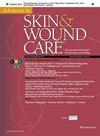Lower Extremity Angiosarcoma: A Life-Threatening Complication of Lymphedema.
IF 1.7
4区 医学
Q3 DERMATOLOGY
引用次数: 0
Abstract
When angiosarcoma, a rare and aggressive tumor of the soft tissue, develops in the setting of chronic lymphedema, it is referred to as Stewart-Treves syndrome. It is usually seen in chronic lymphedema of the upper limbs postmastectomy. Angiosarcoma developing in the lower limb in the setting of chronic lymphedema is rare and has a poor outcome. The presentation of angiosarcoma can vary, ranging from a bleeding papule to a plaque or a subcutaneous mass, which can later progress to ulceration or necrosis. Treatment for Stewart-Treves syndrome is aggressive because of its poor prognosis and usually requires a multidisciplinary approach of surgery, radiation, and chemotherapy. Several theories have been put forth to explain the mechanism of Stewart-Treves syndrome, but it remains ambiguous. The current literature regarding angiosarcoma developing in the setting of chronic lymphedema in the lower limb is limited to single case reports. Herein, the authors report a series of six cases of biopsy-proven angiosarcoma in the setting of lower extremity lymphedema. Providers should include angiosarcoma in the differential diagnosis of ulcerative or vascular tumors arising in the context of lower extremity lymphedema.下肢血管肉瘤:威胁生命的淋巴水肿并发症。
血管肉瘤是一种罕见的侵袭性软组织肿瘤,在慢性淋巴水肿的情况下发生,被称为斯图尔特-特雷弗综合征。它通常见于上肢乳房切除术后的慢性淋巴水肿。在慢性淋巴水肿的情况下发生在下肢的血管肉瘤非常罕见,且预后较差。血管肉瘤的表现多种多样,从出血丘疹到斑块或皮下肿块,随后可能发展为溃疡或坏死。由于预后不良,Stewart-Treves 综合征的治疗非常积极,通常需要采用手术、放疗和化疗等多学科方法。人们提出了多种理论来解释斯图尔特-特雷弗综合征的发病机制,但至今仍不明确。目前有关下肢慢性淋巴水肿时发生血管肉瘤的文献仅限于单例报告。在此,作者报告了六例经活检证实的下肢淋巴水肿血管肉瘤病例。医疗工作者应将血管肉瘤纳入下肢淋巴水肿引起的溃疡性或血管性肿瘤的鉴别诊断中。
本文章由计算机程序翻译,如有差异,请以英文原文为准。
求助全文
约1分钟内获得全文
求助全文
来源期刊

Advances in Skin & Wound Care
DERMATOLOGY-NURSING
CiteScore
2.50
自引率
12.50%
发文量
271
审稿时长
>12 weeks
期刊介绍:
A peer-reviewed, multidisciplinary journal, Advances in Skin & Wound Care is highly regarded for its unique balance of cutting-edge original research and practical clinical management articles on wounds and other problems of skin integrity. Each issue features CME/CE for physicians and nurses, the first journal in the field to regularly offer continuing education for both disciplines.
 求助内容:
求助内容: 应助结果提醒方式:
应助结果提醒方式:


